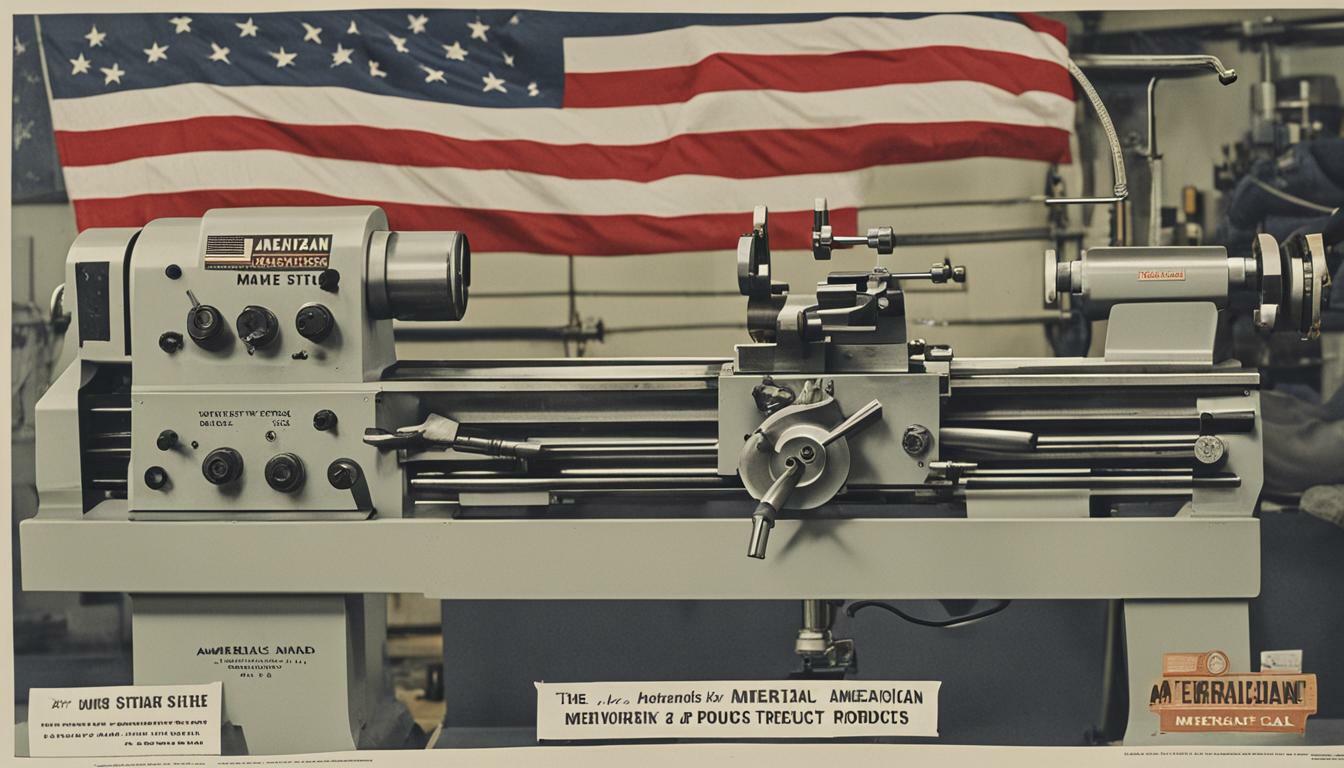


If you’re interested in metalworking, you might have heard of threading on a lathe. It’s a fundamental process that allows you to cut threads on a workpiece, creating screws, bolts, and other fasteners. Threading on a lathe is an essential skill for machinists, metalworkers, and DIY enthusiasts alike.
In this guide, we’ll take you through everything you need to know about threading on a lathe. We’ll cover the basics, such as thread size and pitch, the tools you’ll need, and the best techniques for cutting precise threads. Additionally, we’ll provide tips for troubleshooting and maintaining your threading tool to keep it in top condition.
If you’re a machining enthusiast or professional, you know that lathe cutting threads is an essential skill you need in your arsenal. To do so, you must have a clear understanding of the lathe thread size and the lathe thread pitch.
The lathe thread pitch is the distance a thread takes to complete one full revolution. You can calculate the pitch by measuring the distance from one thread peak to the next and dividing it by the number of threads. On the other hand, the lathe thread size is the diameter of the thread, and you can calculate it by measuring the distance between the crest and the root of the thread.
To start threading on a lathe, you need to have a threading tool and a good understanding of the different lathe cutting threads techniques. The key to producing quality threads is choosing the correct threading tool and using the appropriate cutting angle, feed rate, and spindle speeds, among other variables.
It’s important to note that cutting threads using a lathe requires precision and accuracy. A minor mistake in the pitch or size could result in a poorly threaded job, which could compromise the overall quality of your workpiece.
Precision and accuracy are paramount when it comes to lathe cutting threads. Make sure to choose the right tools and techniques for the job.”
Threading on a lathe requires specific tools to achieve accurate and precise results. The following tools are essential for successful lathe threading:
| Tool | Description |
|---|---|
| Lathe Thread Cutting Tool | The lathe thread cutting tool is used to cut threads into the workpiece. It is designed with a specific threading angle to match the desired thread pitch. |
| Lathe Thread Insert | The lathe thread insert is a replaceable cutting edge that fits into the thread cutting tool. It is available in various sizes and shapes to match the thread profile and pitch required for the job. |
It is essential to choose the correct size and shape of the thread insert to match the thread pitch and profile required for the job. Furthermore, when applying pressure to the thread cutting tool, ensure that it is supported by the tool post to avoid deflection and maintain the required cutting depth.
Threading operations on a lathe require precision and careful attention. Follow these steps to ensure successful threading:
By following these steps, you can perform threading operations on a lathe with confidence and precision.
Threading on a lathe requires precision and skill. Here are some techniques to help you achieve the best results:
By using these techniques, you can create precise threads that meet your specifications. Remember to take your time and practice to achieve the best results.
Threading on a lathe demands precision, which makes maintenance and troubleshooting of utmost importance. One of the most common issues is dull threading tools. As the tool dulls, it generates more heat, leading to poor surface finish and tool wear. This problem can be avoided by using a sharp tool and ensuring it is periodically sharpened.
Sharpening a threading tool involves grinding the top surface of the tool at an angle that matches the thread pitch. To ensure that the tool is sharpened correctly, use a tool post grinder or a bench grinder with a correctly angled grinding wheel. Alternatively, a diamond grinding wheel can be used for precision sharpening.
Thread inserts are a vital part of the threading process. They are subject to wear and need regular maintenance. The key to maintaining thread inserts is to ensure they are clean and free from debris at all times. Debris can become lodged in the thread form, leading to poor-quality threads. To avoid this, use compressed air or a soft-bristled brush to remove debris from the insert’s surface.
Over time, the lathe’s parts can become worn, leading to poor threading results. Regular inspection of the lathe’s parts is, therefore, necessary to ensure that they are in good working condition. Check the lead screw, feed rod, and tailstock alignment. Misaligned parts can lead to poor thread quality, so adjust them accordingly.
Proper maintenance and troubleshooting are vital for successful lathe threading. By maintaining and inspecting the lathe, sharpening tools, and cleaning thread inserts, you can achieve high-quality threads. These tasks might seem daunting at first, but with a little practice, you can become a lathe threading expert.
In conclusion, threading on a lathe is an important skill that every machinist must master. It is essential to have a clear understanding of the basics such as lathe cutting threads, lathe thread size, and lathe thread pitch. Moreover, having the right tools such as the lathe thread cutting tool and lathe thread insert is crucial for successful threading operations on a lathe.
To perform threading operations on a lathe, it is important to follow the correct techniques and procedures. Precision techniques such as starting the thread, maintaining the thread and finishing the thread can produce high-quality results. Additionally, proper troubleshooting and maintenance of both the lathe and threading tools can prevent issues and ensure optimal performance.
Overall, threading on a lathe requires patience, precision, and practice. With the right knowledge, skills, and tools, anyone can become proficient in this essential machining technique. So, whether you’re a seasoned machinist or just starting out, threading on a lathe is an invaluable skill to have in your arsenal.
A: Threading on a lathe refers to the process of cutting threads on a rotating workpiece using a cutting tool.
A: The essential tools for lathe threading include a lathe thread cutting tool and a lathe thread insert.
A: To perform threading operations on a lathe, you need to carefully set the lathe to the desired thread size and pitch and then use the appropriate cutting tool to cut the threads on the workpiece.
A: Mastering precision techniques for threading on a lathe involves factors such as selecting the right cutting tool, setting the correct thread pitch, and ensuring proper alignment and positioning of the workpiece.
A: To troubleshoot and maintain lathe threading, regularly inspect and clean the cutting tools, ensure proper lubrication, and address any issues with alignment or positioning. Additionally, troubleshooting may involve checking for common problems like uneven thread depths or excessive vibration during the threading process.